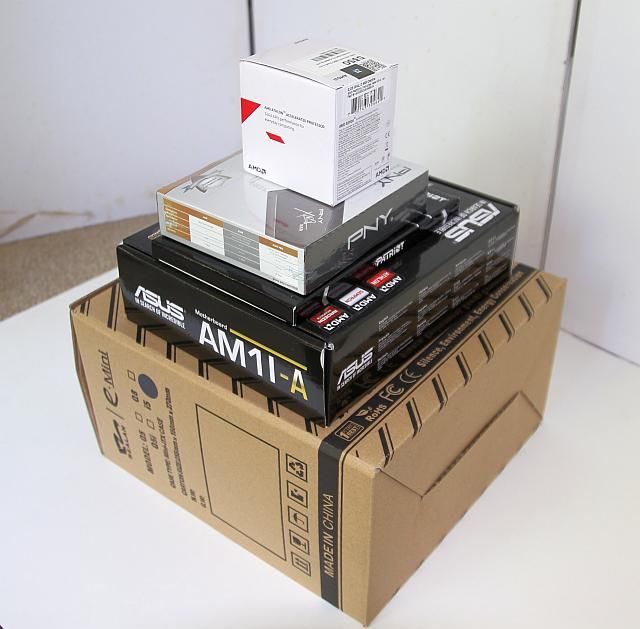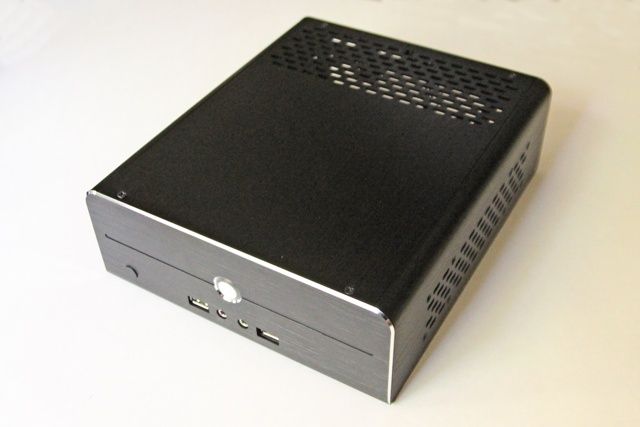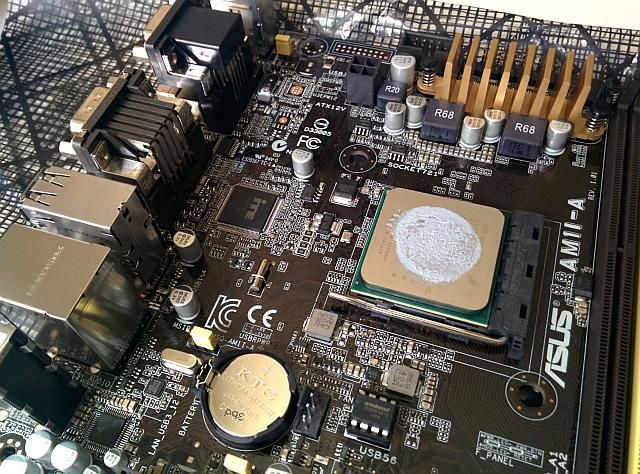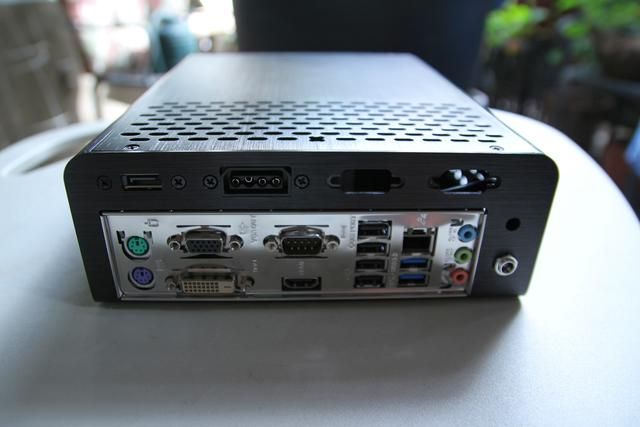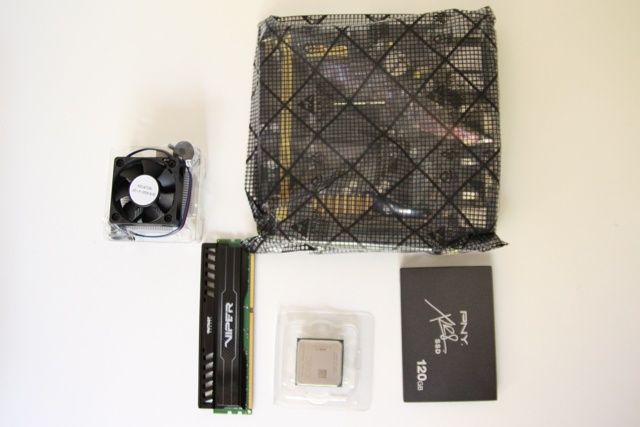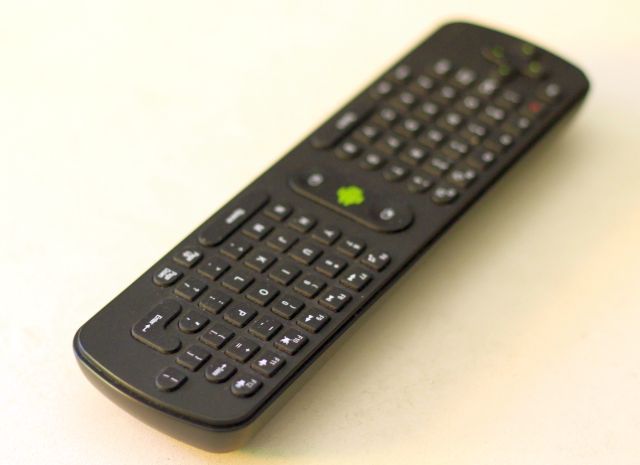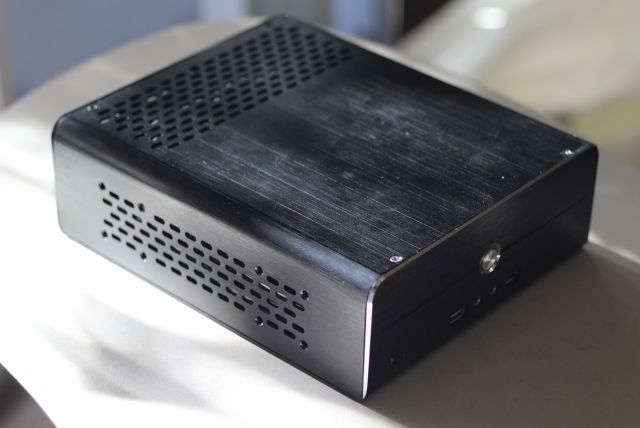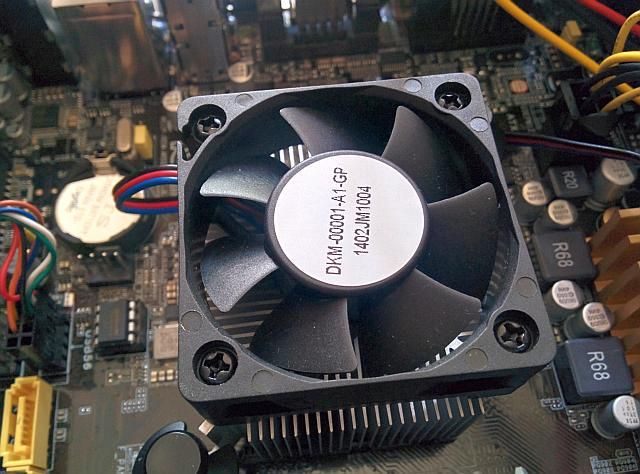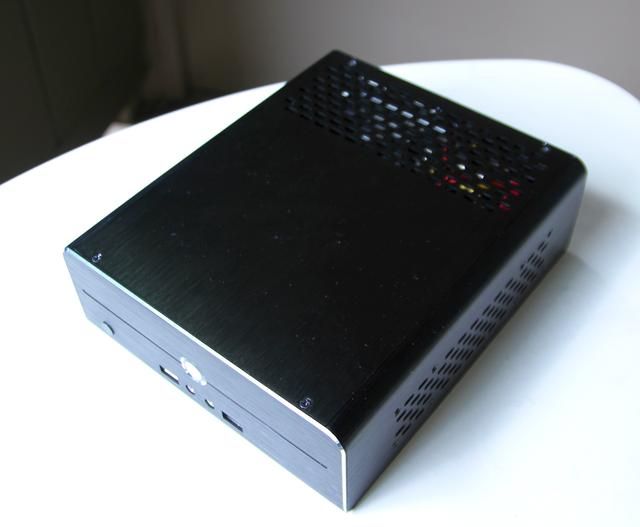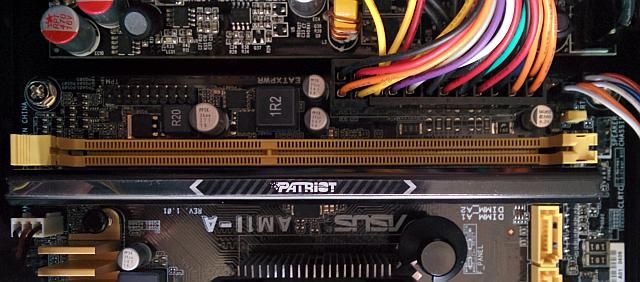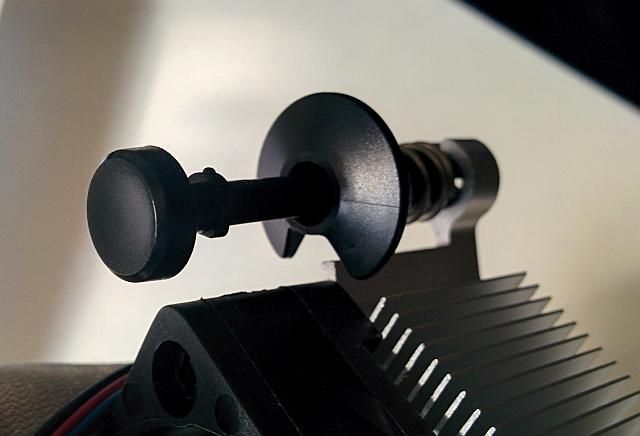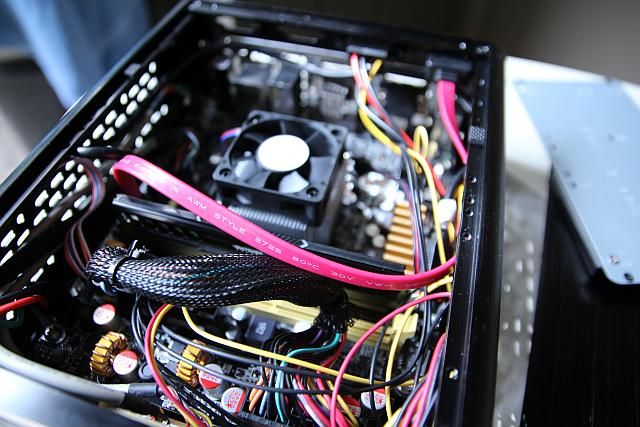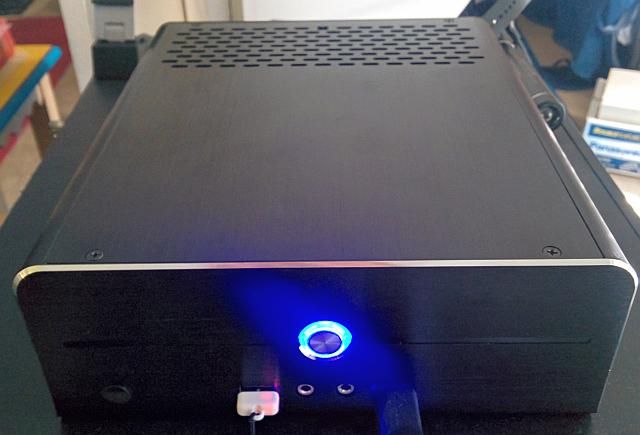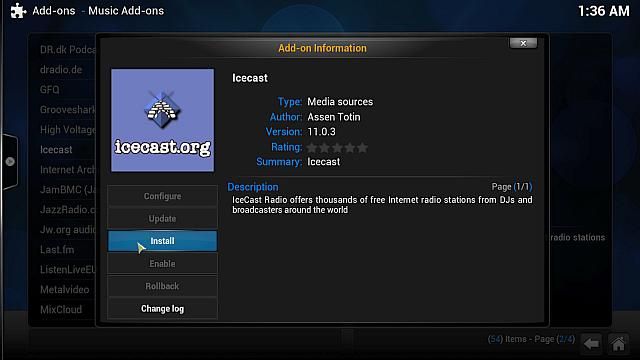Most computer builders overbuild their media centers. Oftentimes they end up with highly inefficient, overpowered systems. On a lark, we threw together a do-it-yourself streaming media center using AMD's just-released AM1 platform.
The AM1 socket aims to bring low-cost, high-efficiency computers to builders everywhere. It offers out-the-box compatibility with the latest version of Ubuntu 14.04 and can operate in a number of roles; primarily office productivity, home theater PCs, light Steam Boxes and more.
While most builds come in around $250, with performance exceeding Intel's Celeron J1900, our build costs around $400.
We'll take you through the components and assembly process, then hopefully you'll be encouraged to build your own unit. Plus, we're giving this build away, so read through the article and join the giveaway below!
The Part List
To build this low-cost, energy-efficient HTPC media center, we'll be using these parts:
- Case and Power Supply: Realan E-i5 mini-ITX HTPC Case — $99.99 via EcoSmartPC
- Motherboard: ASUS AM1I-A mini-ITX — $54.99 via Newegg
- APU: AMD Athlon 5350 — $59.99 via Amazon
- RAM: 8GB Patriot Viper 3 DDR3-1600 — $82.99 via Amazon
- Hard drive: PNY XLR8 128GB Solid State Drive — $59.99 via Amazon
- Wireless adapter: Generic 300Mbps USB Wireless-N adapter — $9.99 via Newegg
- Remote control: Measy RC11 Air Mouse — $15.48 via eBay
- Operating system: Ubuntu 14.04 LTS — Free via Ubuntu
- Total: $383.42
Most builders using cheaper parts can put together a build for around $250. If you really squeeze your pennies, it can come in for less than $200.
Why These Parts?
Realan E-I5 + 60 watt PicoPSU: Realan cases from EcoSmartPC cost slightly more than other mini-ITX cases (such as the M350). They offer excellent aesthetics and construction quality. As an added bonus, the site's proprietor, Doug, provides quality customer support. Another great feature of the Realan case is that it comes with a 60-watt PicoPSU – at around 96% efficiency, meaning they convert from wall current with a loss of only around 4%. While you can purchase other mini-ITX cases with integrated power supplies, these achieve efficiencies of around 70% and suffer from a much higher rate of failure as well as significant noise production.
ASUS AM1I-A mini-ITX motherboard: The AM1 platform includes two kinds of motherboard – those that use the stock AMD configuration and those that add third-party components, such as mini-PCIe slots, additional SATA ports and more. The disadvantage of adding third-party components is that it inhibits Linux compatibility, as the additional features often require drivers that may not exist within the Linux ecosystem. With this in mind, I selected the ASUS AM1I-A which omits all third-party drivers. As a result, Ubuntu 14.04 LTS installed without a hitch. As an added bonus, it includes multi-monitor support, a ton of USB ports and both HDMI and DVI video output.
AMD Athlon 5350 APU: The $60 Athlon 5350 APU (what's an APU?), and its integrated Radeon R3 GPU, outperform similarly priced processors from Intel in graphics, a crucial element of a media center. Within the budget segment, the AM1 platform also offers a socketed approach. Socketed motherboards offer upgrades when the next line of AM1 APUs releases. On the downside, the 5350 falls short of Intel's Celeron J1900 in energy efficiency. However, it does offer dynamic frequency scaling, which allows it to adjust its power consumption in response to workloads.
Patriot Viper 3: I wanted to allocate as much memory to the integrated GPU as possible – 4GB, with 1GB dedicated to the GPU is ideal, but 8GB would provide room for upgradability and better value per gigabyte - and it was within our budget. It has average CAS timings of 10 at 1600MHz. The RAM kit I purchased was a single 8GB stick — the AM1 platform doesn't support dual-channel memory, so a single stick won't hurt performance. If you were to build this setup, you could use two 4GB sticks instead.
PNY XLR8 120GB SSD: The PNY XLR8 series is the best budget-oriented solid state drive on the market. In terms of its performance and construction quality, it's hard finding a better drive on the market that beats its value at $0.50 per gigabyte. It includes a brushed aluminum shell, (reportedly) synchronous NAND memory modules and solid performance for very little money. Some make the case that SanDisk and Kingston make better budget drives – I would counter that Kingston and SanDisk's budget lines don't offer the longer-lasting synchronous NAND and their build quality falls significantly short of the XLR8 line. Ubuntu 14.04 automatically configures itself to work properly with the SSD – by default it enables TRIM (what's TRIM?) and properly sets up the partitions for optimal interaction with flash storage.
Measy RC11 Air Mouse: Measy's line of Air Mouse products use gyroscopic sensors. The sensors allow users to control the on-screen cursor as if it were a part of your hand. For media centers, this provides for an intuitive, highly pleasurable experience. After using the Air Mouse for a few weeks, it's hard going back to a regular remote control. The feel is just that good. Note: The Air Mouse our readers will receive may appear slightly different than the one pictured below.
Ubuntu 14.04 LTS: The latest Long Term Support (LTS) version of Ubuntu recently released and it includes out-the-box support for AMD's APU line of processor. While users will still want to install AMD's proprietary drivers for better performance, the system will work just fine without additional configuration. I picked Ubuntu not just because of its price, but also its software library and overall superior GUI, compared to the desktop-unfriendly Windows 8.
The Media Center of the Future?
Astute observers will notice that this system excludes an optical storage solution, uses an AMD APU and runs Ubuntu. But what about DVDs and Blu-ray you ask? Why did you pick such a weak CPU? What about Windows 8?
To answer the first question, I take the position that physical media shouldn't dominate our computers. Optical storage drives, with their 5.25-inch form factors, take up too much space. Discs become scratched and unplayable, and eventually wear out. Compared to digital media, they fall behind in reliability and operability. By dispensing with physical storage media, we get smaller systems with fewer hassles.
While the Athlon 5350 APU (what's an APU?) doesn't stack up to the latest Intel Core i3 in performance, it costs half as much. It also compares favorably in raw performance with Intel's Celeron J1900, which is among the best per-watt CPUs around. However, as good as the J1900 is, it's not as fast nor as graphically robust as the Athlon 5350 – although it is about $20 cheaper, the J1900 lacks upgradeability. While AM1 systems won't play most modern games in anything other than console resolutions at the lowest of settings, it still makes for efficient and budget friendly systems for older games. It will run office software extremely well.
I want to emphasize the AM1's extremely low power requirements. As power prices creep up, computer energy consumption will start taking a larger and larger chunk out of our pockets. According to my Kill A Watt, the computer uses around 18 watts at idle and 25 watts during typical use. Its maximum power requirements at full-load came in just slightly over 30 watts. The lifetime power requirement over a 4-year cycle comes out to around $30. In many Scandinavian countries, and Germany, power costs four times more than in the United States. Now imagine how much the average 70-watt system costs.
To answer the second question, Windows 8 is hard to like. I won't go into detail since many of our writers covered Windows 8's shortcomings – but many users prefer downgrading to Windows 7. Also, Ubuntu 14.04 LTS plays extremely well with the AMD's AM1 platform. It installs almost perfectly out-the-box and requires very little hard drive space (around 5 gigabytes), so it plays nice with solid state drives (what's an SSD?). It also configures TRIM (what's TRIM?) and properly optimizes its partitions and file tables for use with flash storage. In short, it's a great operating system for use with AM1 motherboards.
Building Your Own Media Center
I built around three main features – the AM1 platform, Ubuntu 14.04 LTS and the awesome software that will turn Ubuntu into a powerful streaming media center. The trick lies in building AM1 systems and installing HTPC-oriented software.
Building for the AM1 Platform
Step one: I started the build by attaching both the APU and the RAM, before anchoring the motherboard into the case. I normally wear anti-static gloves, but most builders I know assemble computers without anti-static implements. I would caution against this — use at least some kind of anti-static implement, either a bracelet or gloves will suffice.
Step two: Next, I positioned the heat sink/fan combination over the CPU socket. The spring-loaded, plastic guide posts require a little bit of force to insert into the holes on the heat sink. I had to spent a fair amount of time aligning the handles of the guide posts with the heat sink as they won't otherwise fit through the holes on the motherboard. Once they are pushed all the way through, the longer pins insert through the center of the guide posts, which will lock the heat sink into place. The AM1 socket only uses two pins (as opposed to Intel's four), so the install process requires less time and effort.
The Realan case required removing a side panel and the PicoPSU to accommodate the motherboard. Once situated over the motherboard stands, I inserted the screws and loosely tighten, to hold the board in place. I then reinserted the side panel and the PicoPSU.
Step three: With all the main parts inside the case, it was just a matter of connecting the front-panel cables, the CPU (or APU) power cable, the 12V power, USB and finally the SSD to the SATA data and SATA power cables. The entire build process took about 30 minutes – about 5 minutes of that involved me fumbling around searching for a lost screw.
Software
Nowadays, Linux computers can access a very large software library. Unlike Android devices, an Ubuntu system can operate as a word processor, gaming machine or complete home media system – although Android took great strides in streaming media over the past few years an Ubuntu-based machine offers better versatility.
I first installed the awesome XBMC media center from the Ubuntu Software Center. XBMC allows users to operate their computer as a full-fledged home media center with just a few add-ins. Netflix requires a few configuration tweaks and a browser extension, but otherwise works seamlessly. The rest of the software installs without additional complication.
- XBMC: We published a complete guide to installing XBMC – the installation process is straightforward. Just download and install. The "add-ins" or plugins available turn XBMC into a killer app, allowing interoperability with Hulu, Netflix (on the Eden build of XBMC) and most streaming video sites. It can also launch game emulators, music players and more. I installed a number of XBMC plug-ins, all sourced from the MakeUseOf archives.
- Yatse: Yatsee allows control over XBMC using an Android device. Configuring Yatse to control the XBMC requires only a few set up steps. However, I prefer using an Air Mouse, as the accelerometer guided controls feels more intuitive than using a touchscreen as an emulated remote.
- Netflix on Linux: Using Netflix on Linux got a lot easier with Pipelight, which allows Silverlight to run. While Netflix doesn't work on the build of XBMC that I'm using, it will run in the browser. Setting up Pipelight is easy, too.
- Desura or Steam (or both?): In my experience, Desura games often offer Linux versions. Out of the twenty Steam games I own, three include Linux compatibility. Out of the three Desura games I own, all three are Linux compatible. Desura compares to Steam favorably in a few respects. However, Steam also installs without a hitch on Linux. In short, if you have Linux games with both services, install both. If you're just getting started, Desura offers a better experience.
- Hulu XBMC plugin: Although I'm not a Hulu user, it's also available as a plug-in for XBMC.
Conclusion
The AM1 platform makes for a really great home media center. You get low cost, high energy efficiency and the ability to stream 1080p video. It covers all the essential functions of a modern desktop and can function as a light Steam Box. Throw Ubuntu 14.04 and XMBC on its SSD and you get a snappy, minimal operating system with a vast, and free, software library. The cherry on the top: Add a gyroscopically equipped remote for intuitive and easy media browsing.
I'm completely satisfied with my build. The tiny, brushed aluminum Realan case offers an aesthetic quality that would cost a fortune in a larger case. It's sleek, sexy and fits in tight, cramped spaces. Combined with an Air Mouse, the media center feels like the future of HTPC machines.
Assembling, configuring and using "Cubby" (the name I gave the media center) required very little effort. My takeaway from DIY media centers using the AM1 platform: It's fantastic. The total wattage of an AM1 build will will come in at a fraction of most media centers.
[recommend]MakeUseOf recommends: For budget DIY HTPC enthusiasts, build it. If you don't build computers or only build powerful systems, this isn't for you.[/recommend]
How do I win the DIY Budget HTPC Media Center Build?
You may enter by submitting your name and email address. You'll receive one entry simply by doing so.
After that, you'll also be offered various methods to earn additional entries. They range from sharing a link to this giveaway on social networks; to commenting or visiting a specific page. The more you participate, the higher your chances of winning! You will receive 5 additional entries into the giveaway for every successful referral via your shared links.
This giveaway begins now and ends Friday, June 13. The winner will be selected at random and informed via email. View the list of winners here.
The Winner
Congratulations, Justin Germino! You would have received an email from jackson@makeuseof.com. Please respond before July 3 to claim your prize. Enquires beyond this date will not be entertained.
Send your products to be reviewed. Contact Jackson Chung for further details.


